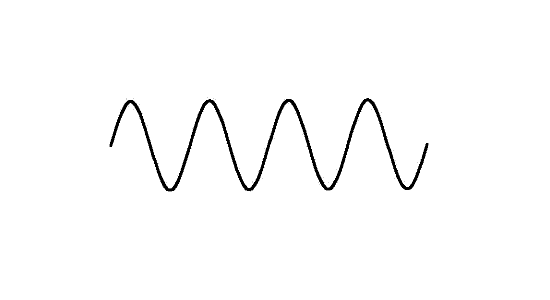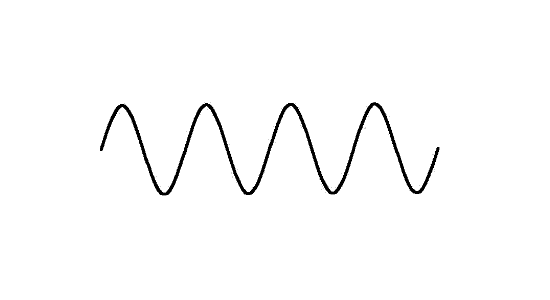The HAMMOND ORGAN
North Suburban HAMMOND ORGAN Service
As I just stated, tremolo and vibrato are periodic and regularly recurring effects in musical tones. The pleasant wavering which a good singer incorporates in her voice while singing is a good example of vibrato, and the periodic wavering that you hear in some guitar effects is typically tremolo. What exactly are these effects? To make it easy to understand each, we'll use two animated "gifs" below which will show you what they do.
Both sound best if they occur between 360 to 420 times per minute. If they are too fast, they sound like an unpleasant "nervous" shakiness in a tone, and if too slow, they sound like some uncertain wavering intrusion. But in the range specified above, they can add a great deal of warmth to many musical tones. Of the two, vibrato is generally considered to be a lot nicer, more pleasant and also musically useful. Now, let's see what tremolo is.
Tremolo is the periodic and regular variation of the amplitude or volume of a musical tone. Notice how the sine wave increases and decreases in height, which in a graphical representation equals the volume of the sound.
Figure 16, below shows by the periodic varying length of the wave sample that vibrato is a slight frequency or pitch change. Whenever a violinist wiggles his finger back and forth on a string, he very slightly changes the effective or sounding length of the string which makes the instantaneous pitch vary a little. In pipe organs, a device called a tremulant periodically varies the instantaneous pressure of the air supplied to the pipes which produces both a slight frequency change and a volume change as well.
Originally, producing vibrato in a Hammond organ was impossible. Therefore, initially Hammond provided tremolo only by using a tremulant device which was really a variable resistor, driven by the main synchronous motor and whose value varied slightly about 360 times a minute.
However, the folks at Hammond soon realized that a true frequency-varying vibrato was necessary and they set about finding a way to produce it, but it could not be done in the conventional manner. There was just no practical way of cyclically varying the tone wheel speed to vary the frequencies of the generated tones at the source.
As this illustration above shows, vibrato is a slight frequency or pitch change. In most musical instrument situations, vibrato and tremolo occur simultaneously. Of the two, vibrato should definitely be the more prominent as it is much more pleasing.

Figure 15. A sine wave signal with tremolo. Notice how the amplitude or height of the wave increases and then decreases.

Figure 16. Here is what vibrato does to a signal. Notice that the wave lengthens slightly and then shortens, which indicates that its instantaneous frequency is changing. Vibrato is a continuously varying slight change in the pitch of a musical tone. Over time, the average frequency remains unchanged.
Previous page Page 8. Next page